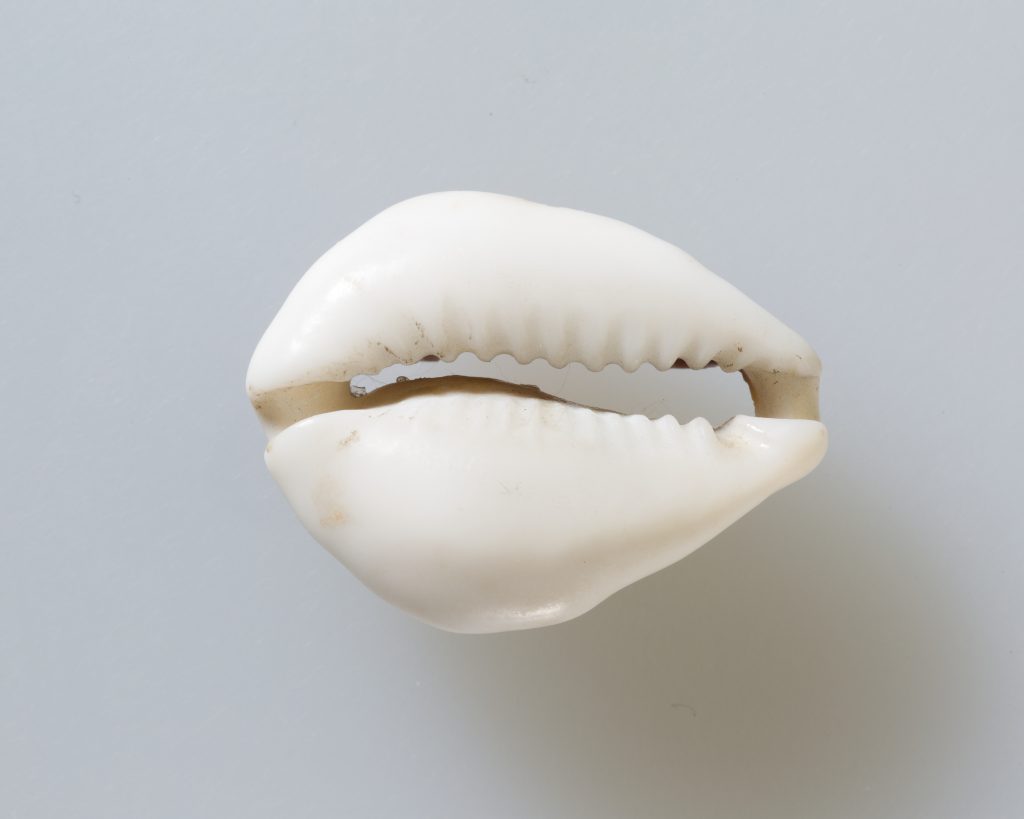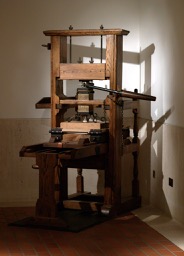Cowrie shells are the shells of small marine snails that are widely distributed in warm seas. Their texture is very smooth due to their glossy finish, and they come in various shapes, patterns, and colors. Although we simply use them for a collection, Cowrie shells had many uses and purpose in ancient times, particularly in ancient Egypt.
In ancient Egypt, women were highly valued for their ability to conceive children. In order to protect their fertility for the future, girls and young women wore Cowrie girdles. They would also be worn during pregnancy in order to protect their child from any harm or complications, and have a safe and successful delivery. It was also believed that women and children in ancient Egypt were often the targets of the so-called evil eye, an evil spirit that would haunt them and was the blame for miscarriages and deaths. The only way to stay protected from the malicious effects of the superstition was by wearing Cowrie shells every day for the rest of their lives. Even when Egyptian women died, they were often buried with a Cowrie shell necklace to protect their spirits in the after life. Cowrie girdles were often adorned by a small naked female that represented the goddess of fertility, and she protected pregnant women throughout their pregnancies. Even though pregnant women were often visited by female birth attendants to make sure that their pregnancy was going well, the Cowrie shells gave them an added sense of protection. After examining the remains of numerous mummies, Egyptian scholars have concluded that Egyptian females must have had fertility difficulties due to their lack of medicine and resources. Those scholars conclude that these women must have depended on their belief in the power of these Cowrie shells. The shape of the Cowrie shell was even thought to symbolize a woman’s pregnancy due to its round shape, seen as similar to a woman’s pregnant belly as the child grows. The vertical opening in the middle of the shell represents the female vulva, which is the main reproductive organ of the woman.1

Gold | Courtesy of the Metropolitan Museum of Art, New York
Cowrie shells in ancient Egypt were also known to be used for decoration purposes. In the tombs of small children, the Cowrie shells were placed around tombs for decoration purposes. There were two very different designs, one for the girls and one for the boys. They were thought to offer a connection between the living and the dead. Cowrie shells were also very valuable, and they were used as jewelry as well, and as home décor. The more Cowrie shells one had, the wealthier one was thought to be, and the more respect one was accorded by the people. Because of their high value, Cowrie shells were commonly used as currency; and they traded the shells for things like food, clothing, and other necessities. In the homes of the Egyptians, there were animal figures that were covered with Cowrie shells. The jewelers who created the decorations and the necklaces used metals to fill the Cowrie shells so that they would make sounds that would capture attention. The jewelers would add gold to the Cowrie shells that would make the shells even more valuable. Such shells were seen as a symbol of the flesh of the gods that were linked to the sun. Silver, another metal added to the shells, represented the bones of the gods and was associated with the moon. The animal that was most used by the ancient Egyptians was the cat. Like the women and children, the Cowrie shells were also used to protect the lives of the animals from evil spirits.2
In conclusion, the ancient Egyptians valued Cowrie shells, and they used for them for many purposes. One of the purposes was their belief that the shells gave some type of protection to women and children from evil spirits. They also protected the lives of the dead when they placed Cowrie shells over their tombs. They also made girdles for pregnant women, who would wear them on their hips in order to protect their wombs and have safe deliveries. When used as necklaces, the Cowrie shells were filled with metals like gold and silver, which gave them significance. We spot them today on the shores of our beaches and don’t realize the importance they have had in the past and the meanings they have carried for lives lived long ago.
- Bill Bynum and Helen Bynum, “Egyptian Cowrie Necklace,” The Lancet Vol. 386, No. 1003 (2016): 1525. ↵
- Amir Goalni, “Cowrie shells and their imitations as ornamental amulets in Egypt and the Near East,” Polish Archaeology in the Mediterranean, Special Studies: Beyond ornamentation 23/2, (2014): 71-94. ↵



53 comments
Tyler Sleeter
Very informative article. The cowrie shell seems to have been of great value to ancient Egyptians. I was not aware that the shell had uses in fertility related areas, but the explanation was interesting. It was interesting to me that they were also used to ward off the “evil eye” since so many cultures believe in that idea and each has their own object for protection. I also found it fascinating that even ancient cultures used sea shells for jewelry by adding gold much as we do in modern cultures.
Veronica Spryszynski
Very interesting I never knew that about those cowrie shells. I have seen them in jewelry like you’ve mentioned before but turns out they have a whole new meaning. I wouldn’t have guessed that they were used as a protection and reassurance in pregnancy. I can see how much that era value these shells by putting them on tombs as a protection from evil spirits.
Khoa Tran
This is a very interesting. I never would think that a Cowrie Shell would have many purposes and are so valuable in an ancient culture. It brought the feeling of safety and protection form evil spirit. I saw a lot of these at beaches but never realize how much meaning and importance it can have in the past. Thanks again Anayeli for a very informative articles.
Blanca Martinez
Egyptian culture has always been one of my major interests, especially their mythology section, I knew about the cowrie shells yet not to this extent. I did not know that cowrie shells were used as methods of protection from bad things, aka evil eye, to instruments for women and their pregnancies. This article was quite eye opening to the many uses of cowrie shells, it was an enjoyable read filled with new knowledge from their culture. Thank you.
Mario Sosa
I never realized just how much symbolism and meaning cowrie shells can have. Interesting how they served for many purposes, from jewelry to money to spiritual protection and protection in fertility. These days, it’s almost laughable to think that people in ancient Egypt fought and possibly killed over these shells. Good job on the article, I found it to be really fascinating.
Teresa Valdez
This article was very informative. It is amazing that we can figure out that Egyptian women had fertility issues due to the cowrie shells that they placed their faith in. I had no idea that cowrie shells represented many different things in this ancient culture. This article is filled with a lot of rich information despite its short length.
Nahim Rancharan
Amazing article. I like how it presented another aspect of ancient Egyptian culture. I did not know that Cowrie shells had such a multifaceted meaning to Egyptians during that time. The article was organized very well and I especially liked how it revealed a little more about the significance of the shells as it developed even further. It was interesting to see how it did not only show some sense of importance for people that were living in Ancient Egypt, but also those in the process of moving on to the afterlife. Towards the end, it also showed how as time passes by, we attach different levels of value to different things. Some things gain more value and some thing decrease in value, in this case, the cowrie shells. All-in-all, it was a great article. Good Job!
Bailey Rider
This was such an interesting an informative article. I never knew that the Egyptians used the cowrie shells for fertility issues. It’s very cool that historians could infer from their heavy use of the shells for fertility that there must have been fertility issues with women. It’s cool the faith that the shells gave the people and how they warded against the evil eye. Thanks for the interesting article!
Luke Trevino
Wow great article! I knew the Egyptians believed in certain gods but never did i know they acted upon it in such manner. it is crazy that we look at it and see it as weird but in reality a lot of religions have traditions that are unorthodox when looked at from a different perspective. Overall very informative essay, i had never known this of the Egyptians.
Samuel Sanchez
This was an interesting topic it gave an insight into the decorative Cowrie shells. I did not even know what the shells were even called or what purpose they served other than as jewelry. After reading this article I know a lot more. The shells have a whole other purpose behind them and that’s pretty crazy. I would have never thought of the shells being used as currency. Overall great article, very informative. Keep up the good work.